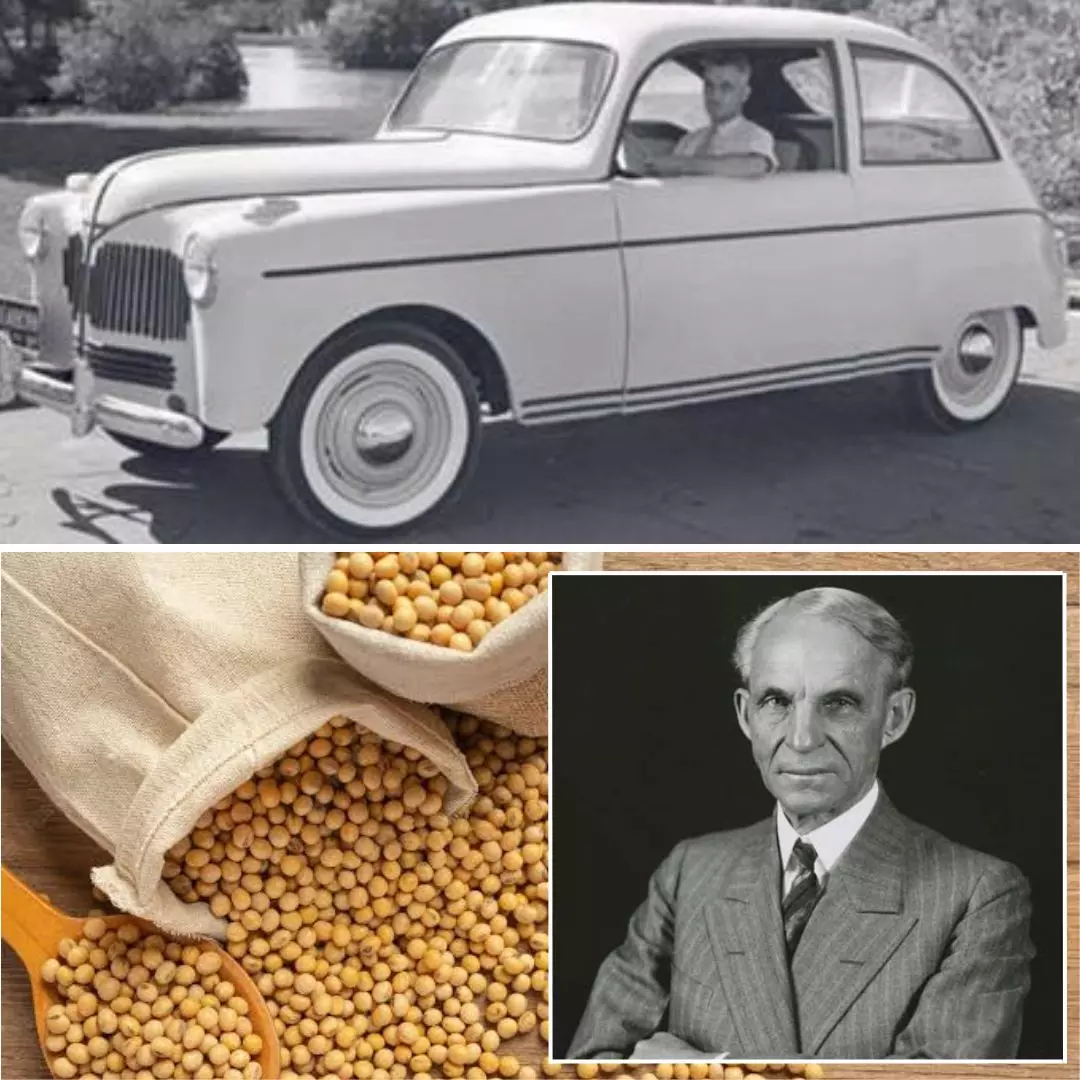
Image Credits: Henry Ford Museum, Wikipedia, Freepik
'Growing Cars From Soil'! Looking Back At Henry Ford's Visionary 'Soybean Car' As Solution To Greener Industry
Writer: Laxmi Mohan Kumar
She is an aspiring journalist in the process of learning and unlearning many things. Always up for discussions on everything from popular culture to politics.
Others/World, 13 Jan 2023 9:16 AM GMT
Editor : Jayali Wavhal |
She writes about gender issues, human interest, and environment.
Creatives : Laxmi Mohan Kumar
She is an aspiring journalist in the process of learning and unlearning many things. Always up for discussions on everything from popular culture to politics.
On January 13, 1942, Henry Ford had patented the plastic car frame for his "Soybean Car" concept. This model was a revolution built out of fiber derived from soybeans and an energy-efficient answer to the then-metal deprived nation.
As the world continues to witness high-tech developments in the automobile industry, The Logical Indian revisits the time when the genius visionary Henry Ford patented a car concept made of agricultural produce. Even though the idea was trashed eventually, it definitely holds scope on multiple grounds, from fuel efficiency to finding a cost-effective alternative for metal. In today's age, with the growing number of automobiles and greener tech becoming the need of the hour, there are lessons that can be learnt from the past for a better future.
Possibilities With Plastic
The Soybean Car was an innovation conceptualised by the legendary Henry Ford. It was a game-changing concept within the automobile industry, which was back then under the threat of metal shortage ahead of the war. Ford provided a potential solution to this concern by building a model out of agricultural plastic. Lowell E. Overly, who was instrumental in the car's creation, commented that the vehicle was made with the help of "soybean fibre in a phenolic resin with formaldehyde used in the impregnation." This made the soybean car lighter, and therefore, more fuel efficient than the typical metal-bodied automobile.
Having been made out of tubular steel and agricultural plastic, there was an instant reduction in the car's weight from 2,500 pounds (1,134 kg) to 1,900 pounds (862 kg). At the time, many media reports wrote up claims that the car's body and fenders were made from a strong material derived from soybeans, wheat, and corn. Some others also proposed that a chemical formula that included soybeans, wheat, hemp, flax, and ramie, was used in the car's creation. After the car was introduced to the public in 1941, it immediately became the talk of the town. The fact that it was made as an answer against the rationing of steel during World War II made it an even more popular concept. According to Wikipedia, the car was also designed to run on hemp fuel.
Million-Dollar Idea
The Soybean Car was a revolutionary concept but was left at just that. The Henry Ford Museum keeps the memory of this car alive and has given three reasons for the industrialist's decision to make a plastic automobile:
- Ford was looking to integrate industry with agriculture.
- The plastic made the cars safer than normal metal cars.
- Soybean cars offered a replacement for the metals used in normal cars, thereby easing the pressure of the shortage of metal caused as a courtesy of World War II.
At the time, Ford had also declared that he would "grow automobiles from the soil" - in reference to the soybean project. However, the project did not take off far despite the 12,000 acres (4,900 ha) of soybeans being put into the experimentation process. The project had to be halted abruptly with the outbreak of World War II, which saw all auto production being suspended. By the end of the war, the idea of a plastic car had fallen through the cracks due to the country's efforts to recover from the war.
The Soybean Car was a project that brought in a lot of taunts and scepticism along with fame. Despite this, there's absolutely no doubt in the fact that this continues to be an idea worth a million dollars. With the kind of technology and expertise humans have developed over the years, past patents, such as the Soybean Car, can be picked up to give a futuristic form.
 All section
All section














